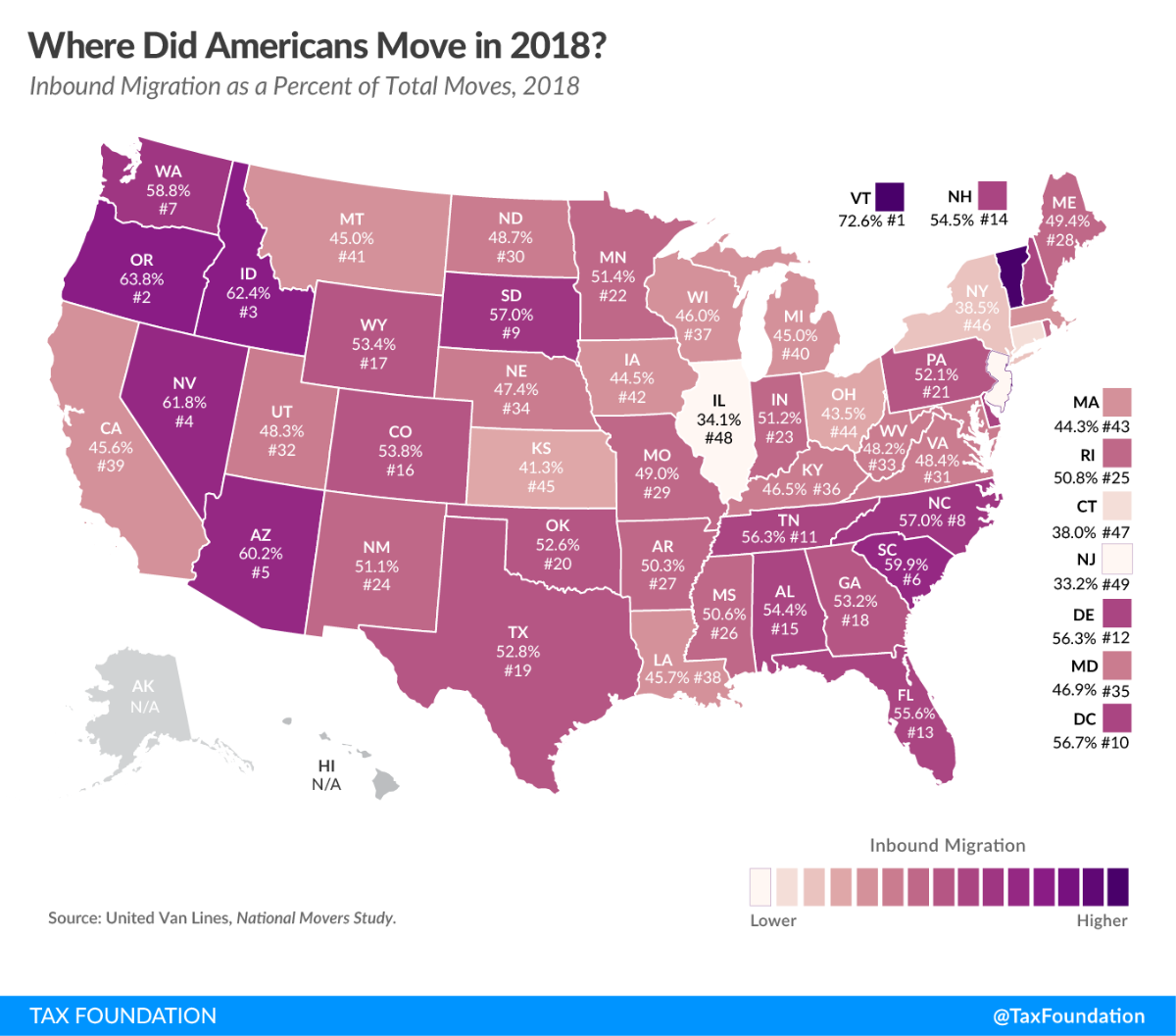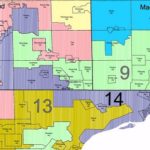A goal for former governor Rick Snyder’s eight years in office, and for Jennifer Granholm before that, was to attract more people to come live in Michigan.
But the newest figures show that Michigan ranks near the bottom among all states in terms of people moving in vs. people moving out. A study of migration patterns in the 48 contiguous states and the District of Columbia found that Michigan ranked 40th in 2018, with 55 percent of those on the move leaving the state and 45 percent moving in.
Those negative numbers are produced by United Van Lines, the largest moving company in the U.S., which releases its company data every January for the previous year. This National Movers Study provides an early look at migration patterns that will be crystallized when federal government statistics for each state are produced later this year.
The study found that the bottom 10 states (see map below) are — in order, starting with the worst outbound migration — New Jersey, Illinois, Connecticut, New York, Kansas, Ohio, Massachusetts, Iowa, Montana and Michigan.
The top 10 benefiting most from net inbound migration are a bit of a surprise. The rankings, starting at the top, are: Vermont, Oregon, Idaho, Nevada, Arizona, South Carolina, Washington, North Carolina, South Dakota and Washington, D.C.
That’s a far-flung list. Texas and Florida, often viewed as states that benefit greatly from long-term moving patterns toward the Sunbelt, are not near the top. Plus, who are all these people moving to Idaho?
As for Michigan’s plight, Gov. Gretchen Whitmer’s administration will have to ponder this problem, knowing that no easy answers exist.
The National Movers Study found that people moving to or from Michigan due to job offers was nearly even – and, by far, the biggest factor in migration decisions. The state struggled most with population losses due to retirements – a pattern that probably dates back for several decades.
At the same time, the report shows that Michigan roughly breaks even among those 18 to 34 years old who are coming or going. So, the emphasis by Granholm and Snyder on attracting or retaining young professionals, especially new college graduates, is not producing a net gain. But it’s not an overwhelming problem either.
Overall, after huge population losses during the so-called “Lost Decade” of 2000-10, the state’s population has inched back up to nearly 10 million. The state’s economy is strong, with a 3.9 percent unemployment rate. Yet, relative to other states, a stagnant population means that Michigan is expected to lose another congressional seat, another representative in Congress, in 2022.
At the nonprofit Tax Foundation, their analysis of the migration figures concludes that state and local tax rates can be decisive in moving decisions made by families and workers:
For many individuals, job opportunities, family considerations, and lifestyle preferences are among the primary factors driving a decision to move out-of-state, but tax considerations can certainly be a make-it or break-it factor.
… It is difficult to measure the extent to which tax considerations factor into individuals’ moving decisions, … (but) while certain factors are outside a state’s control (sunny Florida may always have a certain competitive advantage in attracting retirees, for example), tax policy decisions pose a key area in which states do have significant leverage in fostering an attractive economic landscape.
Yes, but … this lesson does not apply to Michigan. Every year, the Tax Foundation ranks each state based on a wide array of tax policies and produces a State Business Climate Index. In 2019, Michigan ranks 13th as one of the best states for companies to locate.
So, we are 13th in business climate but 40th in net migration. Our welcome mat is left wanting.
To be clear, population growth is a major driver of economic growth. And over the past several months, Michigan’s employers have posted more than 60,000 job openings that have become hard to fill.
Still, more people want to get out of this state than get in.
It’s enough to make those of us who love the Great Lakes State a bit paranoid, wondering what we are doing wrong.












I’m not convinced the anti working class of the Michigan congressional bodies hasn’t had a bit to do with people leaving. They have ignored or overturned the wishes of the majority. This lame duck session changed or tried to change all three ballot proposals that each had 60% support and they hijacked the minimum wage/ earned sick leave proposal and then changed that in the lame duck. They have refused to support road repair and infrastructure upgrades. Why shouldn’t people leave Michigan?